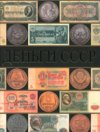
-
 Anglický jazyk
Anglický jazyk
Air Power and the Fight for Khe Sanh
Autor: Bernard C. Nalty
The 1968 fight for Khe Sanh pitted some 6,000 U.S. Marines and South Vietnamese Rangers against an enemy force roughly three times as large. For more than 70 days North Vietnamese troops maintained pressure on Khe Sanh's defenders, who had dug in around... Viac o knihe
Na objednávku
27.99 €
bežná cena: 31.10 €
O knihe
The 1968 fight for Khe Sanh pitted some 6,000 U.S. Marines and South Vietnamese Rangers against an enemy force roughly three times as large. For more than 70 days North Vietnamese troops maintained pressure on Khe Sanh's defenders, who had dug in around the base's airstrip. The original purpose for deploying the Marines and South Vietnamese into the northwest corner of South Vietnam was to block Communist troop movements along Highway 9 toward Quang Tri City and the heavily populated coastal areas. When U.S. intelligence detected large enemy forces assembling near Khe Sanh, the senior American commander in Vietnam, Gen. William C. Westmoreland, ordered the Marines to hold the base.
General Westmoreland suspected that North Vietnam's Defense Minister, Gen. Vo Nguyen Giap, might be tempted to mount a major attack against the base in hopes of achieving "a climactic victory, such as he had done in 1954 at Dien Bien Phu." If Giap did order such an attack, General Westmoreland believed it would provide U.S. air power "a singular opportunity" to destroy a massed enemy force in a relatively uninhabited, isolated region of South Vietnam. In late January 1968 General Westmoreland advised the Chairman of the Joint Chiefs of Staff in Washington, D.C., of his decision to defend Khe Sanh. The Chiefs backed him unanimously.
During the siege that followed, U.S. strike aircraft rained nearly 100,000 tons of munitions down upon the North Vietnamese while other planes---primarily U.S. Air Force transports---flew in essential supplies of food, ammunition, and other necessities to Khe Sanh's defenders. The Leathernecks also used their own aircraft to provision Marine outposts which denied the enemy the high ground overlooking the base. Other military elements participating in the battle included U.S. Army artillerymen dug in east of Khe Sanh, who fired deadly concentrations against the besieging forces. Marine howitzers and mortars added to the heavy U.S. fire, while Army engineers joined Navy Seabees in helping prepare airstrips which supported the allied defense effort. Finally, the relief of Khe Sanh---though spearheaded by Army troops---also involved American Marines and soldiers of the Army of the Republic of Vietnam.
In preparing this history, the author has attempted to describe the essential contributions of the Army, Navy, and Marines as well as the Air Force. But primarily, he has concentrated upon the operations, activities, and accomplishments of the U.S. Air Force. He also has included in this narrative a discussion of several controversies and problem areas which arose during the battle---such as General Westmoreland's appointment of Gen. William W. Momyer, his deputy for air, as single manager for air operations.
- Vydavateľstvo: University Press of the Pacific
- Rok vydania: 2005
- Formát: Paperback
- Rozmer: 229 x 152 mm
- Jazyk: Anglický jazyk
- ISBN: 9781410222589






 Ruský jazyk
Ruský jazyk 





